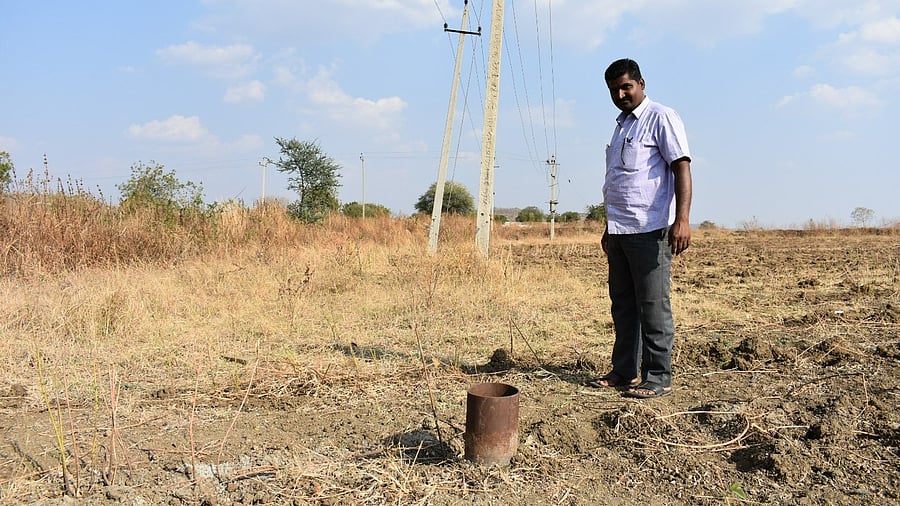
Credit: Special Arrangement
Bengaluru: Dead borewells on the outskirts of the city illustrate the impact of failed rural water management, with a study of two gram panchayats showing that even the wet years characterised by good rainfall may not end the threat to drinking water security unless farmers are incentivised away from abstraction.
Led by Veena Srinivasan of the Water, Environment, Land and Livelihoods (WELL) Labs and Ashoka Trust for Research in Ecology and Environment (ATREE), researchers studied Aralumallige and Doddatumakuru gram panchayats in Bengaluru Rural district.
The areas covered are part of Aralumallige watershed, a semi-dry landscape with annual average rainfall of 800 mm. There are hard rock aquifers in the area, where studies have flagged the difficulty in implementing simple rules like spacing different tube wells.
Data regarding functional and abandoned wells in the watershed in the years 1981, 2001 and 2021 showed the extent of groundwater depletion.
“The distribution of well depths changed substantially with respect to both private and gram panchayat borewells. In the early years, private borewells were deeper. After 2000, however, gram panchayats also began drilling deeper borewells, to keep up with declining water tables,” the study said.
A total of 645 private and 254 panchayat borewells were analysed. In the 1981-91 period, about 10 per cent of the private borewells and about 5 per cent of borewells were deeper than 200 metres.
By 2011-17, this changed to more than 90 per cent of both private and panchayat borewells being dug deeper than 200 metres. There were, however, more private borewells that were deeper than 300 metres.
The study noted that between 2011 and 2021, the population increase and the increase in per capita volumetric norm from 40 to 55 litre per capita per day prompted an increase in the number of functioning wells.
The cost, however, increased in two ways as existing borewells failed, requiring more borewells to compensate for the loss.
“In fact, 41 new borewells were drilled and 30 wells failed, leaving 34 functioning borewells at the end of 2021,” the study noted.
Of the Rs 2.07 crore spent by gram panchayats for drilling borewells, Rs 1.51 crore or 73 per cent was spent for replacing failed borewells.
“Not only did the capital costs increase, but groundwater pumping costs also increased with falling water tables,” the study noted, adding that the hike in electricity cost added to the burden.
At the end of 2022, the two panchayats spent Rs 1.09 crore for pumping water.
Together, they had a total arrears of Rs 3.34 crore by the end of that year.
“The case study illustrates the danger of attempting to address rural water supply (challenges) independently of sound water resources planning,” the study said.
As altering the incentives to farmers (free or subsidised electricity) was a politically fraught proposition, the study suggested exploration of paying farmers to transition to diversified income portfolios that can increase farmer incomes and reduce abstraction.
Such measures are necessary as even in the wet years, farmers can instal motors and start pumping from the failed borewells.
Considering that 56 per cent of the irrigated land in Karnataka depends on borewells, as per a study by Institute for Social and Economic Change in 2020, the government needs to come up with measures for groundwater management that ensure drinking water security of rural areas is not compromised.